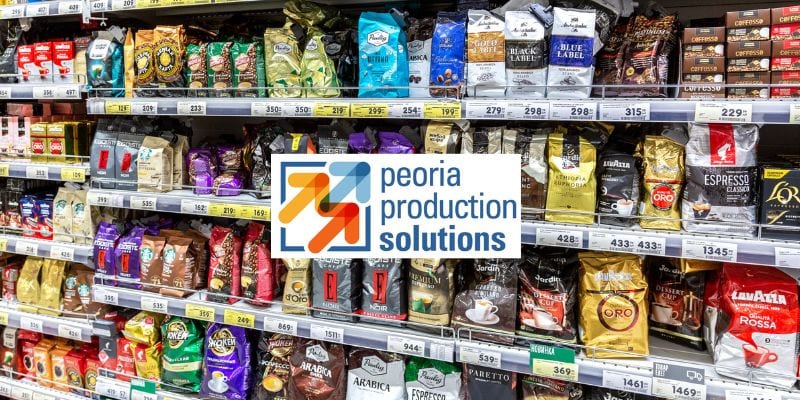
Two distinct methods for sealing products have gained prominence in flexible packaging applications – heat seal and cold seal packaging. These methods come with their own unique characteristics and applications, making it crucial for businesses to make an informed choice when creating packaging solutions for their products.
The Significance of the Right Seal
While it may seem like a minor detail, the type of seal chosen for product packaging can significantly impact the shelf-life and overall protection of your products. Particularly in the realm of food packaging, the seal plays a critical role in regulating the entry of gas and moisture, ensuring that your products remain fresh and safe for consumption.
Sealing a package is not merely about closing it; it’s about achieving both protection and user-friendliness through seal quality and integrity. In this context, two sealing methods, namely cold seal adhesives (also known as self-seal adhesives) and heat seal adhesives, come into play. Both are employed in various flexible packaging applications, including food packaging and medical devices. However, each seal type has its own set of advantages and disadvantages, making the choice dependent on specific product requirements.
Understanding the Seal Mechanism
It is essential to grasp how these sealing mechanisms work. This understanding is crucial for preventing product spoilage and ensuring consistent food quality during storage.
Heat Seal Packaging
Heat sealing, the more commonly used of the two methods, is the go-to choice when high-integrity seals are required. Contrary to its name, the actual bond is not formed until the package structure solidifies during the cooling phase. Pressure must be continuously applied during this cooling process to maintain control over the package and ensure a visually appealing and secure seal.
Heat seal packaging does not necessitate special processes or materials like pressure-sensitive adhesives, making it a cost-effective option. Moreover, it offers a wide range of laminations and performance characteristics that can be customized to suit specific product needs.
- Process: Heat is applied to create a seal, typically involving a multi-layered film with an outer layer to prevent melting, a core layer (e.g., polypropylene), and an interior sealant layer.
- Applications: Commonly used in packaging foodstuffs, beverages, cosmetics, pharmaceuticals, and more, especially when high-integrity seals are essential.
- Advantages:Economical, versatile in terms of performance characteristics, and allows for the creation of tamper-evident seals.
- Considerations: Requires precise management of heat, dwell time, and pressure during the sealing process for effectiveness.
- Common Usage: Seen in the packaging of bags, films, and containers made from thermoplastics, particularly in food packaging.
Achieving an effective heat seal necessitates careful control of three factors: heat temperature, dwell time, and pressure applied by the sealing machinery. Any change in one of these factors requires adjustments in the other two, which underscores the importance of manufacturers understanding the procedures, methods, and materials involved in achieving quality seals.
Cold Seal Packaging
Cold seal adhesives have a long history and are employed in a different manner. This method involves using a combination of rubber, resins, plasticizers, extenders, and other additives to create an adhesive bond between the substrates used in flexible packaging. Commercial cold seal packaging can comprise anywhere from two to a dozen or more layers.
In cold seal packaging, adhesives are coated onto plastic films or substrates, forming layers that strongly bond when pressure is applied. This adhesive is applied in a wet form to the substrate using a revolving gravure cylinder, then dried in an extended oven before being reeled up at the end of the press. One interesting facet is that the adhesive is applied in a specific pattern that enables seal formation without the need for heat. Recent advancements involve the use of copolymers of vinyl acetate and ethylene combined with rubber latex, sometimes without the inclusion of natural rubber latex.
Making the Right Choice Between Heat Seal and Cold Seal Packaging
The choice between heat seal and cold seal packaging hinges on various factors, primarily the specific needs and requirements of your products. Considerations include machine speed and capacity, barrier properties (e.g., moisture, oxygen, UV light), and seal strength. For some products, a high-integrity heat seal might be the ideal choice, while for others, the convenience and efficiency of a cold seal adhesive might be more appropriate.
The sealing method you select plays a pivotal role in preserving product freshness, quality, and safety. It’s essential to weigh the pros and cons of heat seal and cold seal packaging carefully, ensuring that your choice aligns with the unique demands of your products. Ultimately, the right seal can make all the difference in delivering a superior packaging solution that protects your goods and enhances user experience.
Leading Flex Pack Provider
When it comes to flexible packaging, PPS stands out as a leading provider of comprehensive solutions. As a prominent player in the realm of contract packaging, we offer a wide array of secondary packaging services, including flexible packaging, to businesses of all sizes. Our commitment to excellence has earned us recognition in the industry, making us the go-to choice for companies seeking high-quality packaging, wrapping, filling, and bagging services.
Unmatched Expertise and Cutting-Edge Technology
At PPS, we leverage the latest in automated equipment to streamline our packaging processes. Our modern equipment includes auto bag filling, auto labeling, heat sealing, heat tunnel technology, shrink sleeve applications, and vertical continuous band sealing, complete with a stand and hot stamp imprinter. This cutting-edge equipment, combined with a trained and dedicated staff, ensures efficient and precise packaging solutions for your products.
With over 80 years of industry experience, PPS has earned its reputation as a leader in secondary packaging solutions. Our range of production solutions extends beyond packaging to include wrapping, kitting, assembly, commercial sewing, and more. Contact us today to learn how we can collaborate to improve your packaging solutions and help you choose the best method of sealing, whether heat seal or cold seal packaging.
